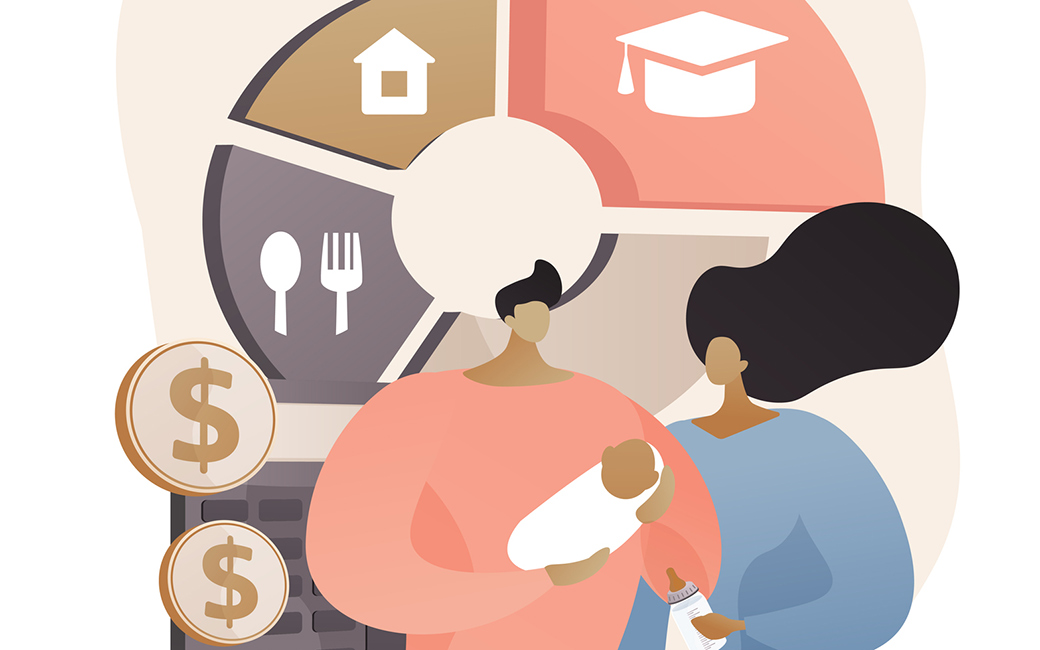Understanding the child tax credit
Faculty experts in economics, family policy break down new changes to the credit, its potential impact
By Rebecca Kirkman & Cody Boteler on August 15, 2021

In July, the IRS began depositing monthly tax credits into the bank accounts of millions of families across the country.
The direct deposits are the result of expanded Child Tax Credit (CTC) under the American Rescue Plan Act, which was signed into law on March 11. The changes include increasing the amount per child ages 5 and younger from $2,000 to $3,600 and for children ages 6 through 16 from $2,000 to $3,000, as well as making 17-year-olds eligible for the $3,000 credit.
Another change includes breaking the credit into monthly payments, meaning most families will receive $250–$300 per child each month through the end of 2021.
For now, though, the changes are temporary—the expansion of the credits through the American Rescue Plan Act only extend through 2021 unless new legislation, such as President Joe Biden’s proposed American Families Plan, is passed.
To answer common questions and break down the potential impacts of the expanded CTC, we spoke with Towson University faculty experts Shantanu Bagchi, an associate professor in the Department of Economics, and Diane Harnek Kegan, a professor in the Department of Family Studies and Community Development.

Bagchi explains that the tax credit is not primarily new spending but rather a reorganization and expansion of how certain dependent-based tax credits are handled. It could also potentially lead to a reduction in spending in other federally funded safety net programs.
“Proponents of this credit argue that it allows families access to money when they need it, rather than having to wait to file taxes and then receive the credits in the future,” he says. “Although I don’t know if this has been looked at, I would imagine that this tax credit will, in fact, lead to lower spending on other antipoverty programs: It will fundamentally alleviate borrowing constraints for many American families.”
The new credit has the potential to impact the economy, too, by allowing parents—especially the 1.4 million mothers with school-aged children who left the workforce during the pandemic—to afford child care and reenter the workplace.
“There is a lot of empirical evidence that child care expenditures are large enough to force a parent to stay home rather than work. In the economics of time use, this is known as participation cost, and the goal of this tax credit is to reduce that cost for parents,” Bagchi explains. “In general, this kind of a social insurance expenditure is best understood as an investment in society’s human capital, which will increase our long-term productivity.”
The expanded credit brings the U.S. closer in line with family support provided in other wealthy nations. These programs benefit everyone, Harnek Kegan says—even those who don’t have children or aren’t eligible for the credit.

“Providing benefits that support families and reduce poverty and hunger are important to society in general,” Harnek Kegan says. “Anti-poverty advocates have supported spreading out benefits through the year to assist families with budgeting. Programs that provide necessities to families in need regularly agree that allowing families to access money that is discretionary and not already earmarked is critical in assisting families with getting out of poverty.”
Anti-poverty advocates project that the CTC, which has been dubbed “Social Security for kids,” could reduce childhood poverty by half.
“By providing financial benefits, many low-income families could be lifted out of poverty,” Harnek Kegan says. “Increasing income for families in poverty has positive impacts for children like improving health, academic performance and other long-term benefits. Also, racial and ethnic disparities in poverty can be addressed as many families of color will receive the maximum payment.”
And unlike many other federal safety net programs such as unemployment or the Supplemental Nutrition Assistance Program (SNAP), the benefit remains consistent each month even if family income fluctuates, allowing families to better plan to financially support the household.
“As families earn more, they will continue to get the benefit,” Harnek Kegan explains. “This is important as many safety net programs are means-tested, and families get less as they make more, which can be difficult for low-income families to financially adjust to changes.”
But the long-term impacts will be limited, Harnek Kegan says, if the legislation isn’t passed to extend the policy beyond 2021. “Not much will change for families living in poverty if the policy reverts when the expansion ends at the beginning of next year.”
Members of the media looking to speak with faculty experts at Towson University should contact Matt Palmer, director of media relations and news, at mpalmer@towson.edu.